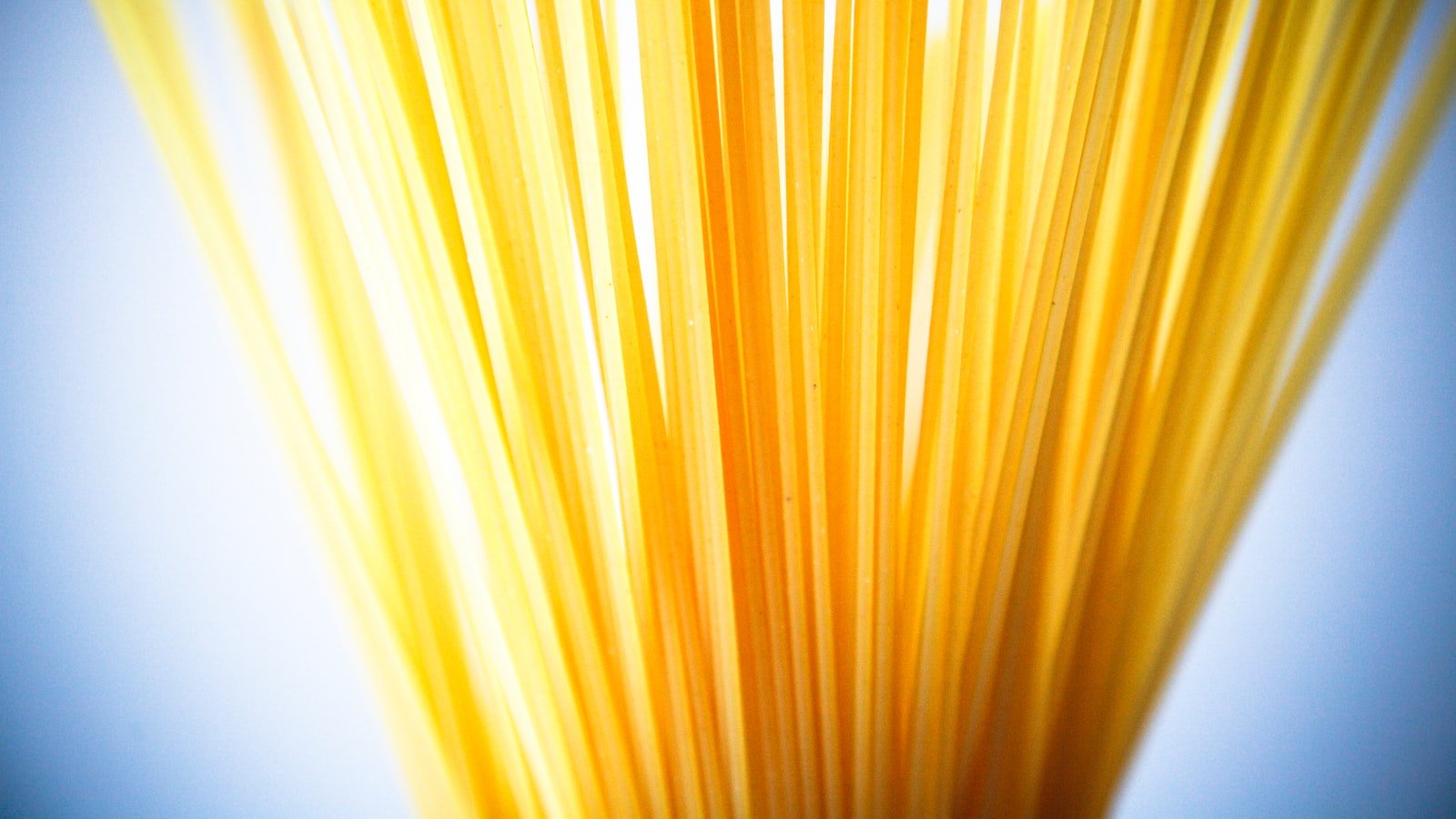Now Reading: How to Store Pasta for the Long Term
-
01
How to Store Pasta for the Long Term

How to Store Pasta for the Long Term
Pasta, the ubiquitous pantry staple that transcends borders, cultures, and palates, has been winning our hearts over centuries with its tantalizing taste and endless versatility. Whether you’re a pasta aficionado or an occasional noodle enthusiast, the thought of a perfectly al dente dish never fails to delight. While keeping a stash of pasta on hand is a great idea, knowing how to store it properly for the long haul guarantees a steady supply of comfort on those dreary days or when inspiration strikes unexpectedly. From spaghetti to fusilli, let us embark on a delectable journey to unlock the secrets of preserving pasta’s delectability, all while ensuring its unwavering freshness and shelf-stability. After all, no one wants to encounter a plate of less-than-perfect pasta when hunger strikes! So, dear enthusiasts, gather your culinary curiosity, as we delve into the realm of long-term pasta storage, discovering tips and tricks that will leave your taste buds forever grateful.
Table of Contents
- Planning for Long-Term Pasta Storage
- Optimal Storage Conditions for Pasta
- Selecting the Right Containers for Pasta Storage
- Tips for Preparing Pasta for Long-Term Storage
- Ensuring Quality and Shelf Life of Stored Pasta
- Q&A
- Future Outlook

Planning for Long-Term Pasta Storage
As pasta lovers, we can all agree that having a stash of pasta at home is essential. Whether it’s for those last-minute dinner cravings or a long-term emergency situation, is a smart move. Here are some tips to help you preserve your pasta for months, or even years, without compromising its quality:
- Choose the right packaging: To ensure the longevity of your pasta, invest in airtight containers or vacuum-sealed bags. These will help protect your pasta from moisture, air, and pests, keeping it fresh for extended periods.
- Consider temperature and storage location: Pasta is best stored in a cool, dry place away from direct sunlight. Avoid areas prone to temperature fluctuations, such as the kitchen pantry. Instead, find a spot in your home with a stable temperature, like a basement or a dedicated cupboard.
- Rotate your stock: To maintain the quality of your pasta stash, it’s important to practice the “first in, first out” rule. Label your packages with dates and use the older stock before delving into the fresher ones. This way, you’ll always have a fresh supply of delicious pasta.
Incorporating these storage practices into your pasta game plan will ensure that you’re always prepared to whip up a scrumptious meal, no matter the circumstances. Plus, the peace of mind that comes with knowing your pasta is safe and ready for any culinary adventure is truly priceless!

Optimal Storage Conditions for Pasta
Preserving the quality and flavor of pasta requires proper storage. By following the optimal storage conditions, you can ensure that your pasta stays fresh and delicious for an extended period. Here are some tips to help you maintain the perfect conditions:
- Cool and Dry Environment: Store your pasta in a cool and dry place, away from any direct sunlight or sources of heat. Heat and humidity can cause the pasta to spoil quickly and lose its texture. The ideal temperature for pasta storage is below 70°F (21°C).
- Airtight Containers: To prevent moisture and unwanted odors from creeping into your pasta, transfer it to an airtight container. This will also protect it from insects and pests. Consider using glass or plastic containers with tight-fitting lids to maintain freshness.
- Avoid Freezing: While pasta can be stored in the freezer, it is generally best to avoid freezing it unless necessary. Freezing can alter the texture and taste of pasta, often resulting in a mushy consistency. If you must freeze cooked pasta, ensure it is thoroughly cooled and stored in airtight freezer bags for a maximum of two months.
- Label and Rotate: It is useful to label your pasta containers with the date of purchase or expiration to keep track of freshness. Additionally, practice the “first in, first out” rule to ensure you use the oldest pasta first, allowing for a rotation of your stock.
By following these optimal storage conditions, your pasta will retain its quality and be ready to enhance your culinary creations whenever you desire!
Selecting the Right Containers for Pasta Storage
Tips for Selecting the Perfect Pasta Storage Containers
When it comes to keeping your pasta fresh and delicious, choosing the right storage containers is key. Here are some useful tips to help you make the best choice:
- Material matters: Opt for containers made of BPA-free plastic, glass, or stainless steel. These materials are durable, hygienic, and will prevent any unwanted odors or flavors from seeping into your pasta.
- Airtight is the way to go: Ensure that the containers you choose have airtight seals. This helps to keep moisture out and preserves the quality and taste of your pasta for longer periods.
- Variety in sizes: Consider investing in a range of container sizes to accommodate different amounts of pasta. This allows you to have the perfect container for a single serving or for storing larger quantities.
- Transparent convenience: Opt for transparent containers so you can easily see the contents and identify the type of pasta without having to open the container.
- Stackable and space-saving: Look for containers that are stackable to save valuable pantry space. This way, you can neatly organize your pasta collection without taking up too much room.
With these tips in mind, you can confidently select the right containers for your pasta storage needs. Enjoy the convenience and freshness of perfectly stored pasta every time!
Tips for Preparing Pasta for Long-Term Storage
When it comes to preserving pasta for long-term storage, following a few simple tips can ensure that you have delicious, ready-to-cook pasta whenever you need it. Here are some key pointers to keep in mind:
- Dry it thoroughly: Before storing pasta, make sure it is completely dry. Any moisture left can lead to the growth of mold or bacteria. Spread the cooked pasta on a clean, dry surface, and allow air-drying for a few hours until it is completely moisture-free.
- Portion it out: Divide the pasta into individual or family-sized portions before storing. This will make it easier to use what you need without exposing the entire batch to potential contaminants.
- Choose suitable containers: Opt for airtight containers that are specifically designed for long-term food storage. Mason jars, high-quality plastic containers, or vacuum-sealed bags are excellent choices to maintain the freshness and flavor of your pasta.
- Store in a cool, dark place: Exposure to sunlight, heat, or humidity can significantly reduce the shelf life of stored pasta. Find a cool and dry spot in your pantry or cupboard to ensure optimal conditions for long-term storage.
By following these simple tips, you can store pasta for months or even years while maintaining its taste and quality. Now you can have a pantry stocked with preserved pasta, ready to be transformed into scrumptious meals whenever the craving strikes!
Ensuring Quality and Shelf Life of Stored Pasta
Pasta is a pantry staple that can be stored for an extended period of time if proper measures are taken to ensure its quality and shelf life. Here are some tips to keep your stored pasta fresh and delicious:
- Choose the right packaging: Store your pasta in airtight containers or sealed bags to prevent exposure to moisture, air, and pests. This will help maintain its texture and flavor over time.
- Control the storage environment: Pasta should be stored in a cool, dry place away from direct sunlight. Avoid locations that experience extreme temperature fluctuations, as this can accelerate spoilage.
- Label and rotate: Properly label your pasta packages with the purchase or storage date to keep track of their freshness. Practice the “first in, first out” method, using older pasta before newer additions to your collection.
- Inspect before cooking: Before preparing your stored pasta, always examine it for any signs of mold, insects, or an off odor. Discard any pasta that appears spoiled to ensure your dish is safe to consume.
By following these guidelines, you can confidently stock up on pasta and enjoy its deliciousness whenever you crave a comforting plate of spaghetti, linguine, or any other pasta variety.
Q&A
Q: Can I store pasta for the long term?
A: Absolutely! By following a few simple steps, you can store pasta for an extended period of time, ensuring it remains fresh and ready to enjoy whenever you need it.
Q: What is the best way to store pasta long term?
A: The key is to keep pasta in an airtight container, away from moisture and light. Choose cool, dry storage locations, such as a pantry or cupboard, to preserve its quality over time.
Q: Should I store pasta in its original packaging?
A: While the original packaging is often sufficient for short-term storage, it is recommended to transfer pasta to an airtight storage container to protect it from moisture and pests for the long term.
Q: Can I freeze pasta for long-term storage?
A: Freezing pasta is a great option, especially if you want to extend its shelf life. Cook the pasta slightly less than al dente, freeze it in an airtight bag, and it can stay edible for up to eight months.
Q: How long can dried pasta be stored?
A: If stored properly, dried pasta can maintain its quality for up to two years. Always check for any signs of spoilage, such as strange odors or insect infestation, before consuming.
Q: Can I store freshly made pasta for the long term?
A: Freshly made pasta is best enjoyed immediately, but if you have excess, you can freeze it for later use. Place it on a baking sheet in a single layer until frozen, then transfer to an airtight container. It can be stored for up to six months.
Q: Are there any specific precautions for storing whole wheat or gluten-free pasta?
A: Whole wheat and gluten-free pasta should be stored in the same manner as regular pasta. However, it is advised to consume it within a slightly shorter timeframe, around 1-1.5 years, to ensure the best taste and texture.
Q: Can I still consume pasta that has been stored for longer than the recommended time?
A: While pasta may remain safe to eat beyond the recommended storage timeframe, its taste, texture, and nutritional value may deteriorate. To guarantee the best culinary experience, it is suggested to adhere to the recommended storage guidelines whenever possible.
Q: Are there any signs of spoiled pasta I should be aware of?
A: If you notice an off smell, discoloration, strange texture, or the presence of insects, it is advisable to discard the pasta immediately. It is always better to err on the side of caution when it comes to consuming stored food.
Future Outlook
As we bid farewell to this saucy journey of eternal pasta preservation, we’re left with a satisfying culinary conquest and a stockpile of beloved noodles, ready for any gastronomic inspiration that comes our way. Armed with newfound knowledge on storing pasta for the long term, we have fortified our pantry with a weapon against blandness and banal dinners.
Remember, my fellow pasta enthusiasts, to master the art of pasta preservation is to embrace a world of endless possibilities. Let your storage strategy become an ally in your quest for culinary triumphs. Don’t shy away from experimentation, as pasta, true to its nature, is an open-hearted canvas eager to be adorned with delectable flavors.
Now, armed with a pinch of pragmatism and a sprinkle of creativity, you can wave goodbye to stale or mushy noodles forevermore. Conquer the looming threat of expiration dates and seize the opportunity to prolong the life of tantalizing tubular treats and swirling spirals of enduring brilliance.
Whether your pasta passion lies in a simple classic spaghetti marinara or a complex lasagna masterpiece, rest easy knowing that your secret carbohydrate arsenal is poised, ready to deliver an exceptional dining experience at a moment’s notice.
Let your pantry shelves flawlessly encapsulate the magic of Italy; where every al dente bite tells a story, and each mouthful transports you to flourishing vineyards, charming trattorias, and bustling local markets. It is within these shelves that you conquer time itself, turning seasons into memories, and bringing an Italian siesta to your plate, no matter the hour or occasion.
So dear readers, armed with this knowledge, embark on a pasta-filled journey of epic proportions. Explore the endless varieties, store them with care, and let your culinary adventures unfurl with unparalleled gusto. May your kitchen become a sanctuary, a haven for flourishing noodles, waiting silently, bound only by your culinary prowess and imagination.
Remember, fellow pasta enthusiasts, the power to store pasta for the long term now lies within your hands. Master it, embrace it, and let your gastronomic legacy thread its way through generations to come. Bon appétit!
As an affiliate, my content may feature links to products I personally use and recommend. By taking action, like subscribing or making a purchase, you’ll be supporting my work and fueling my taco cravings at the same time. Win-win, right?
Want to read more? Check out our Affiliate Disclosure page.





